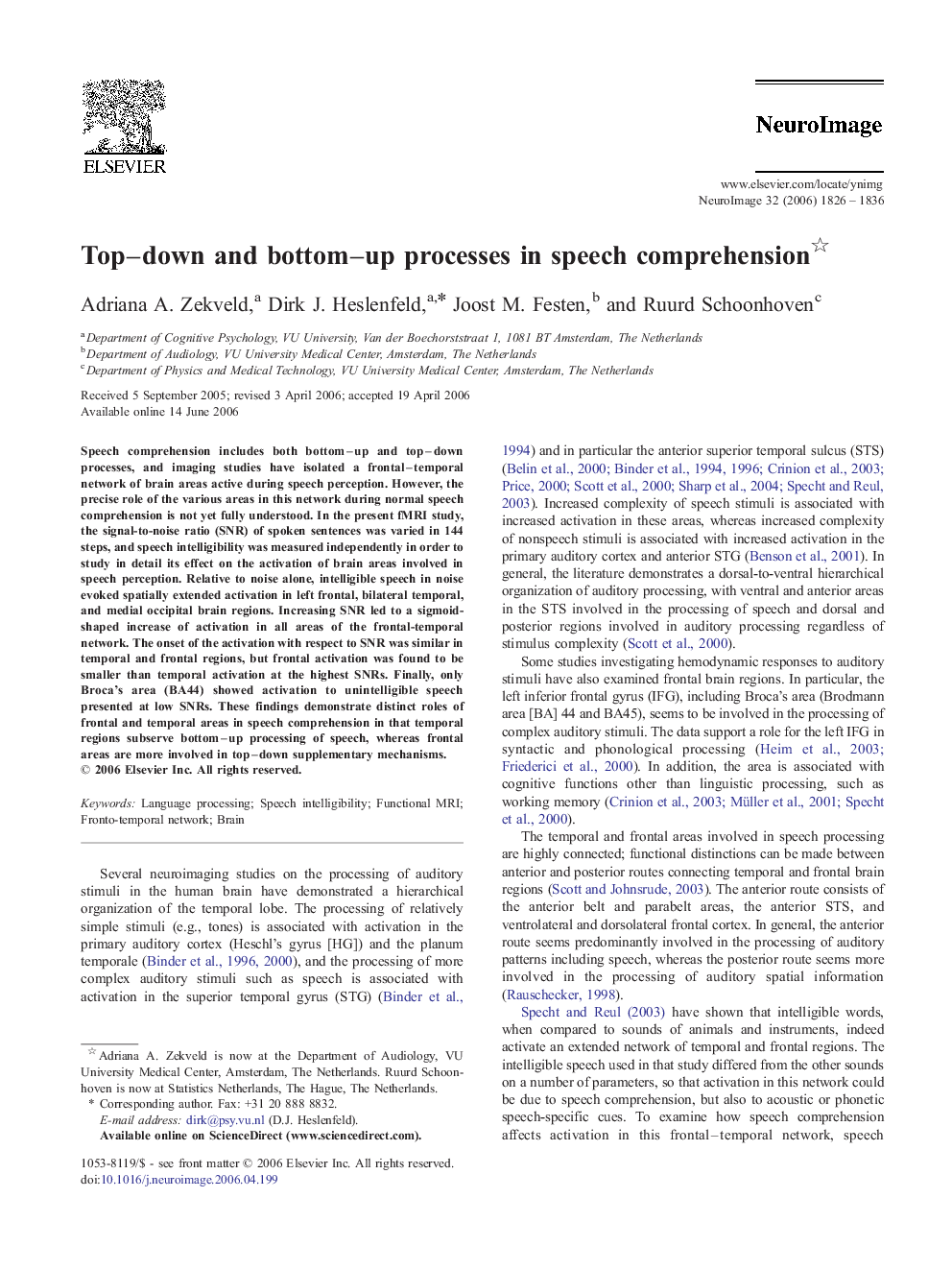| Article ID | Journal | Published Year | Pages | File Type |
|---|---|---|---|---|
| 3074112 | NeuroImage | 2006 | 11 Pages |
Speech comprehension includes both bottom–up and top–down processes, and imaging studies have isolated a frontal–temporal network of brain areas active during speech perception. However, the precise role of the various areas in this network during normal speech comprehension is not yet fully understood. In the present fMRI study, the signal-to-noise ratio (SNR) of spoken sentences was varied in 144 steps, and speech intelligibility was measured independently in order to study in detail its effect on the activation of brain areas involved in speech perception. Relative to noise alone, intelligible speech in noise evoked spatially extended activation in left frontal, bilateral temporal, and medial occipital brain regions. Increasing SNR led to a sigmoid-shaped increase of activation in all areas of the frontal-temporal network. The onset of the activation with respect to SNR was similar in temporal and frontal regions, but frontal activation was found to be smaller than temporal activation at the highest SNRs. Finally, only Broca's area (BA44) showed activation to unintelligible speech presented at low SNRs. These findings demonstrate distinct roles of frontal and temporal areas in speech comprehension in that temporal regions subserve bottom–up processing of speech, whereas frontal areas are more involved in top–down supplementary mechanisms.
